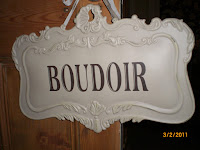Hall, Stairs & Landing Project
This has to be one of the most challenging of all my projects to date purely because of the height of the area and the fact that every inch of wall space was covered in wood-chip wallpaper and all the skirting boards, door frames and stair risers, treads and string were covered in dirty blistered paintwork.
My father took some measurements and obtained some scaffolding for me, which he subsequently assembled at the first landing on the stairwell. This would be a permanent feature for weeks to come so had to be assembled to allow access up and down the stairs. I spent hour after hour stripping off layers of wallpaper and even found some old Victorian type patterns beneath the wood-chip which were a complete nightmare to remove and were pasted to the wall with very strong adhesive. I also purchased some heavy duty paint stripper which resembled a thick paste and had to be formed around the dado rail then sealed with plastic and left for a couple of days. It was well worth the wait when I came to peel away the stripper it brought layers of paint and stain away with it to reveal the wood patina beneath.
 |
| Wood-chip paper removed |
 |
| Before work commenced |
 |
| White panel on bedroom door |
 |
| Oil based glaze on original door |
Accessorising
I bought a set of twelve prints of Istanbul and twelve matching picture frames and mounts and these are displayed at the top and bottom of the staircase. The bench in the downstairs hall was purchased from an antique centre at Wentworth. The light fitting at the top of the staircase was a challenge, it needed to be large because of the ceiling height and it required a long chain to allow for accessibility. I found what I was looking for on a shopping trip to Ikea and the chandelier now takes pride of place over the stairwell. The mirror and cushions have been purchased whilst out on shopping trips over a period of time and I am sure you will agree that they complement the overall scheme.
The tiles on the floor are the original Victorian ones and are I am pleased to say complete , the spindles, posts and handrail on the staircase were already in the property when I purchased it and I stripped the staircase to match these.





















